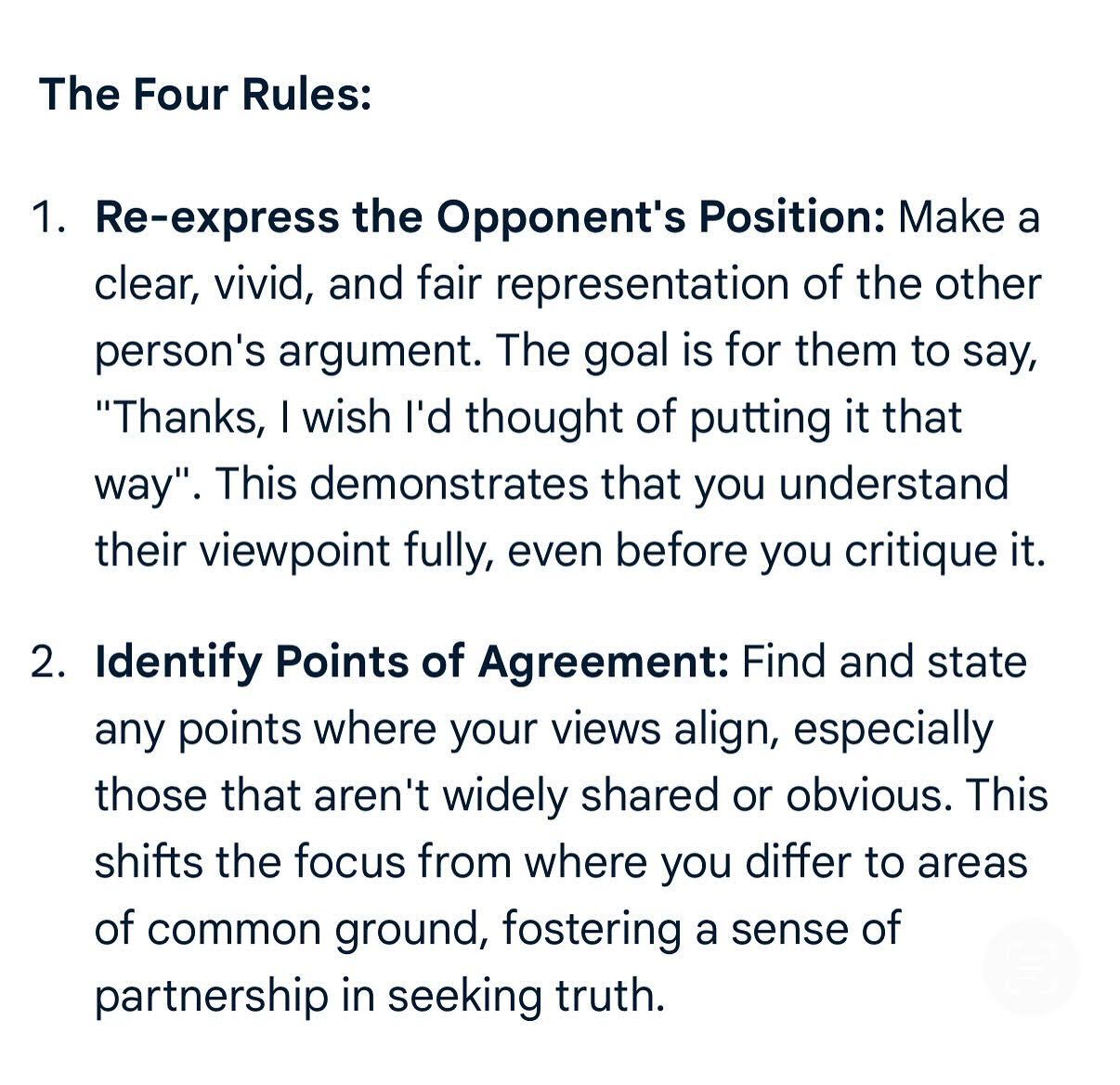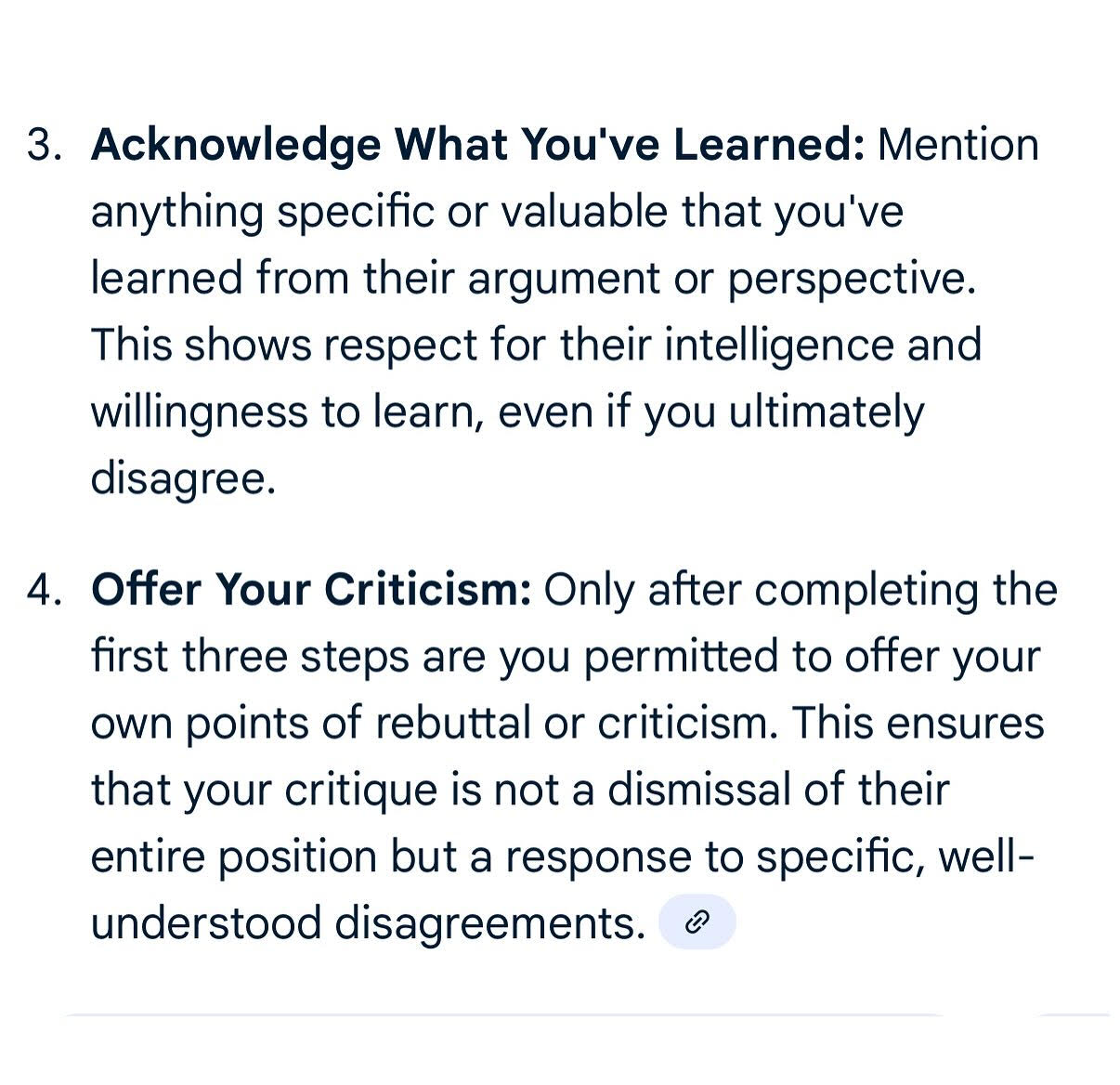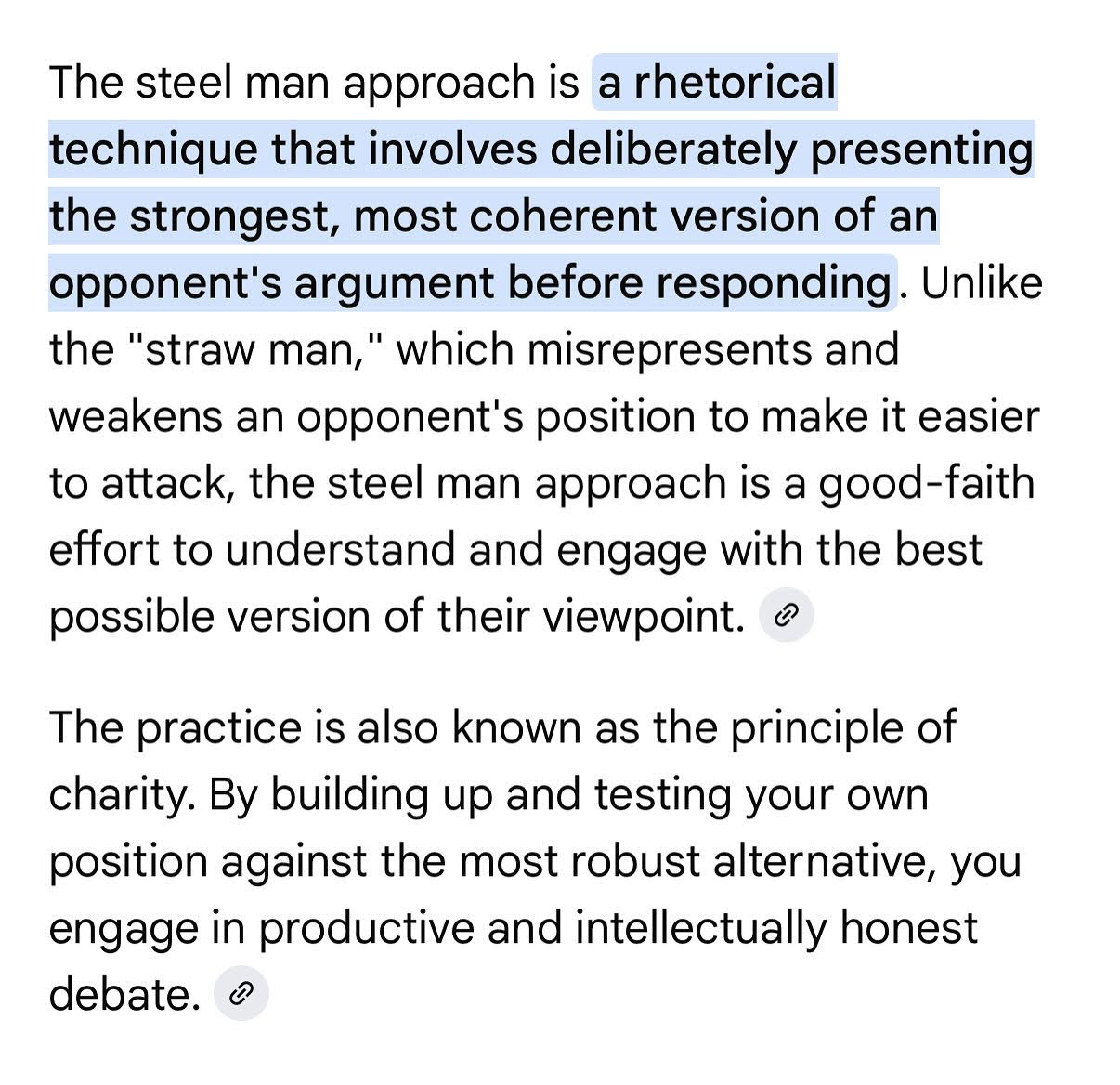The Steel Man Argument: Four Rules
1.  Re-express the Opponent's Position:
Re-express the Opponent's Position:
Make a clear, vivid, and fair representation of the other person's
argument. The goal is for them to say, "Thanks, I wish I'd thought
of putting it that way." This demonstrates that you understand their
viewpoint fully, even before you critique it.
2.  Identify Points of Agreement:
Identify Points of Agreement:
Find and state any points where your views align, especially those
that aren't widely shared or obvious. This shifts the focus from
where you differ to areas of common ground, fostering a sense of
partnership in seeking truth.
3.  Acknowledge What You've Learned:
Acknowledge What You've Learned:
Mention anything specific or valuable that you've learned from their
argument or perspective. This shows respect for their intelligence
and willingness to learn, even if you ultimately disagree.
4.  Offer Your Criticism:
Offer Your Criticism:
Only after completing the first three steps are you permitted to
offer your own points of rebuttal or criticism. This ensures that
your critique is not a dismissal of their entire position but a
response to specific, well-understood disagreements.
The Steel Man Approach
The steel man approach is a rhetorical technique that involves deliberately presenting the strongest, most coherent version of an opponent's argument before responding.
Unlike the "straw man," which misrepresents and weakens an opponent's position to make it easier to attack, the steel man approach is a good-faith effort to understand and engage with the best possible version of their viewpoint.
The practice is also known as the principle of charity. By building up and testing your own position against the most robust alternative, you engage in productive and intellectually honest debate.


THINK - Is it True? Helpful? Inspiring? Necessary? Kind?


